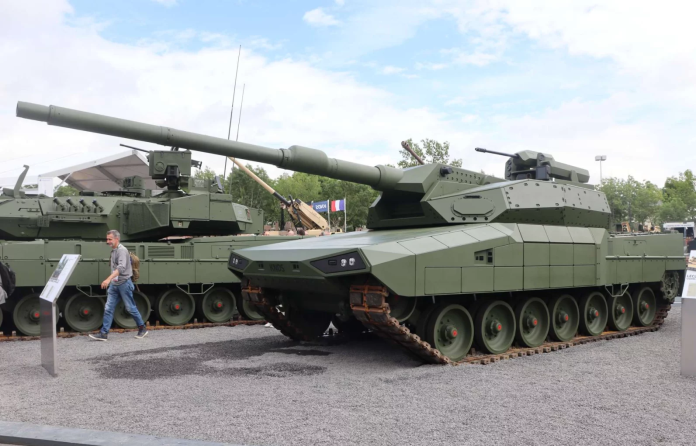KNDS unveiled the new Leopard 2 A-RC 3.0 Main Battle Tank at the Eurosatory 2024 exhibition.
A European defence industry holding company KNDS, formerly KMW+Nexter Defence Systems, introduced an improved Leopard 2, incorporating unmanned turret technology, on 17 June.
The three-man crew, a commander, gunner, and driver, operate within the chassis. The unmanned turret design ensures that there is no penetration into the chassis, facilitated by a gun laying system. As a result, the turret construction is extremely flat, increasing crew protection by reducing the vulnerable area by 30 per cent and placing the crew below in a compact compartment.
Moreover, the Leopard 2 A-RC 3.0 features an adaptable turret capable of accommodating various major calibres. The modular autoloader system provides high loading speed. It is equipped with a modular rack designed to load three rounds in ten seconds.
The crew can customise the armament for both 3D Line of Sight (LOS) and Non-Line of Sight (NLOS) engagements. The tank also carries a suite of sensors that enhance tactical and situational awareness, including UxV control, optronics, and multiple detection systems capable of spotting optics and drones.
Fighting capacity
The Leopard 2 A-RC 3.0 weighs less than 60 tonnes, depending on configuration, and is 7.95 metres long, 3.77 metres wide, and 2.44 metres in height to the turret roof. With the cannon, the length is 11.17 metres. Its 1,100 kW (1,500 hp) engine propels the tank to a speed of more than 65 km/h providing 460 kilometres of range on the road. The ground clearance of 500 mm allows the vehicle to navigate various terrains efficiently.
The vehicle is equipped with a NATO 120 mm L55 or L44 smoothbore gun. However, it can be replaced with 130 mm or 140 mm guns. Auxiliary armament includes a multi-purpose smoke and grenade launcher. The tank also has a Remote Controlled Weapon Station (RCWS) with a NATO 30×113 mm gun capable of countering UAV threats and a multi-purpose LOS/NLOS guided missile system.
The tank’s defence is further reinforced with polyvalent layers of protection, including an Active Protection System (APS).
